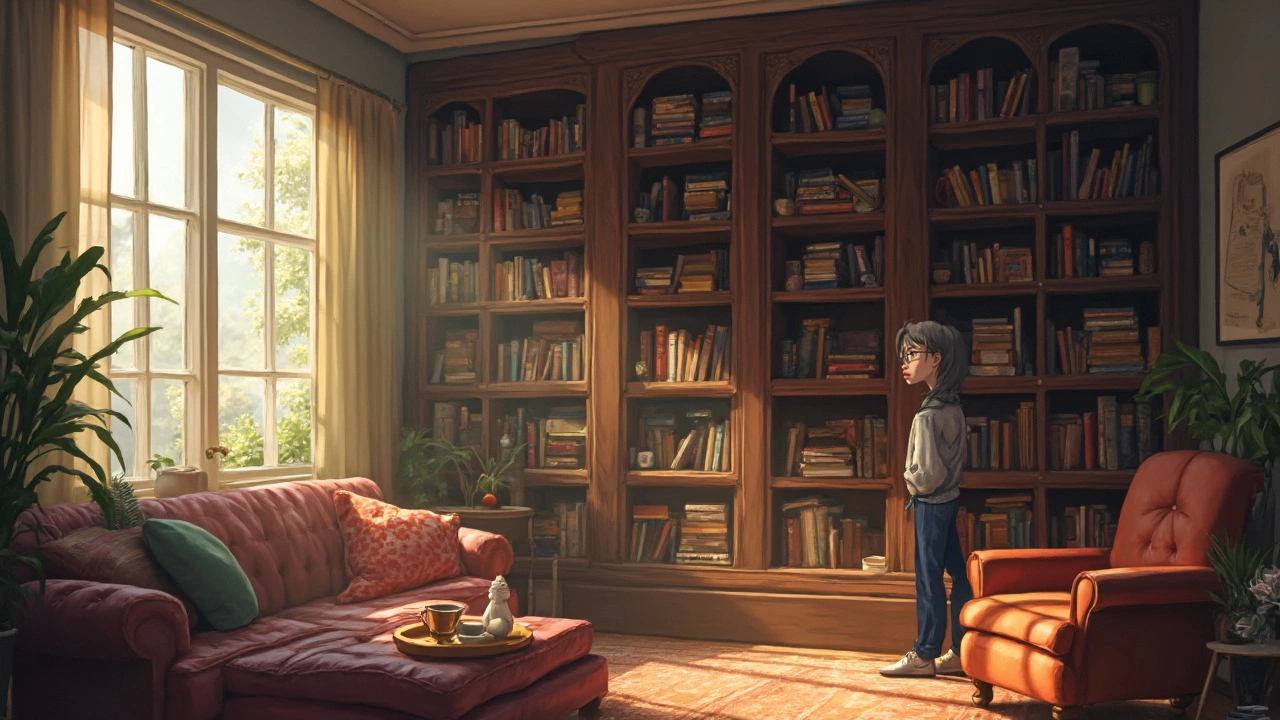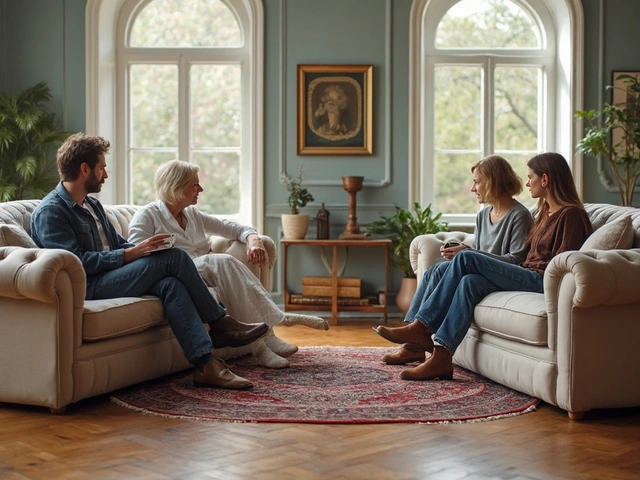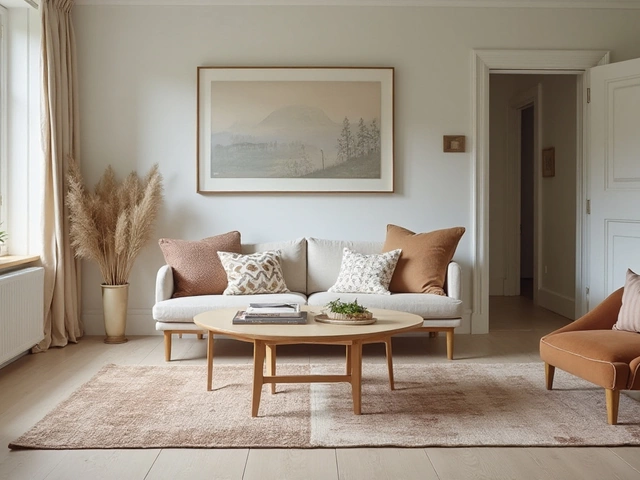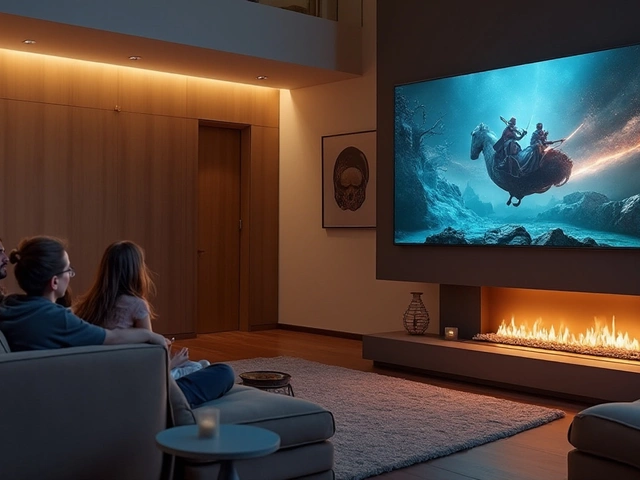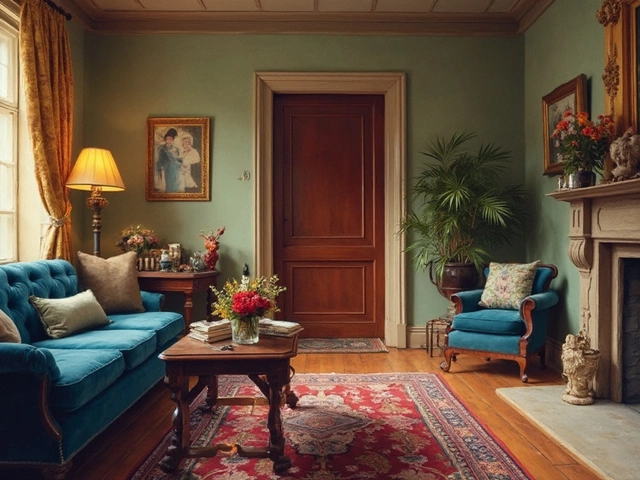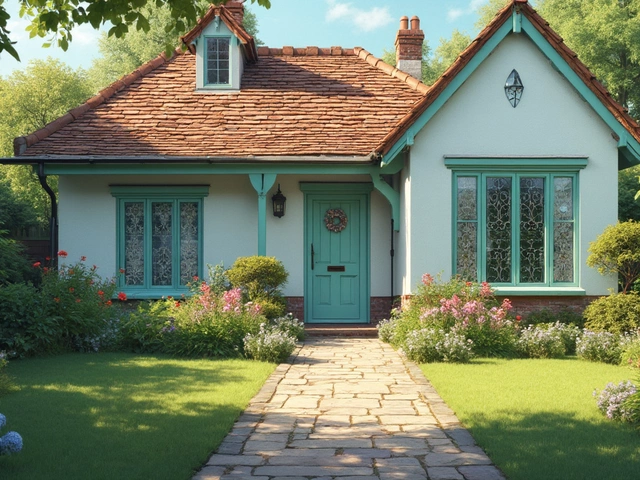Ever wondered if you should shove your books to the back of a bookcase? It sounds like a small thing, but it actually affects more than most people think. The spot you pick for your books can shake up how you use your shelves every day—plus, it can even make your favorite reads last longer or collect way more dust than they should.
Pushing books to the back might seem like it gives a cleaner look or more space for little trinkets in front. But there’s a flip side. Books sitting away from the edge can be out of reach, tougher to spot, and—let’s be real—are way more likely to become magnets for dust and forgotten receipts.
If you’re into home decor, where you put your books can totally change your room’s vibe. Neatly lined up at the front of the bookcase? That’s sleek and easy to grab. Pushed back? Maybe it feels less cluttered—but is it practical? There’s more to this than meets the eye, so let’s break down what actually happens when your books take the back seat—literally.
- Why Book Placement Even Matters
- The Hidden Consequences for Your Books
- Accessibility: Quick Grab or Dust Collector?
- Aesthetics and Room Vibes
- Bookcase Hacks and Pro Tips
- Making the Space Work for You
Why Book Placement Even Matters
Most people don’t think twice about how they stack their books, but shelf setup can impact way more than looks. Book placement on your bookcase affects everything from how often you read to how well your books hold up over time.
First, placing books close to the front edge of a shelf makes them easier to grab and less likely to get forgotten. This simple habit can mean you actually read and enjoy what you own. If you cram your books in the back, they’re likely to get ignored. You’re also less likely to spot that novel you promised yourself you’d finish.
Here’s something to chew on: studies from independent library groups show that books stored at the very back of deep shelves see 40% less use than those placed at the front. Basically, out of sight really does mean out of mind here.
Your book arrangement can also save your paperbacks and hardcovers from damage. When books are pushed all the way back, more air circulates behind them, which can collect dust or even lead to faded spines if your shelves are near windows. Prolonged sunlight can kill a book’s color in just a couple seasons (check out the table for some quick facts):
| Book Placement | Average Dust Buildup/Year | Fading Risk (Near Window) |
|---|---|---|
| Back of Shelf | High | Very High |
| Front of Shelf | Low | Medium |
There are also those little things—like personalizing the space with photos or collectibles. If your books are tucked far away, you get more room for display, but you might lose track of your reading stash or end up stacking stuff you never use.
So yeah, where you set your books on a bookcase isn’t just about what looks best. It’s about making your stuff work for you, saving your books from needless wear, and making your reading habits stick. If you care about bookcase organization, giving this some thought can upgrade the whole vibe of your space and the way you enjoy it.
The Hidden Consequences for Your Books
Pushing your books to the back of a bookcase comes with a few surprises you might not expect. One big issue is dust. When books aren’t right by the edge, air can circulate more around them and dust loves to settle on those exposed top edges. Over time, this isn’t just about looks—excess dust can creep between pages or damage old paper, especially if your shelves aren’t cleaned often. And let’s be honest, who actually dusts the back of a shelf every week?
Another problem is sunlight. Books far back on a shelf are harder to spot, so you might forget what’s even there. And if your shelves are near a window, the front of the bookcase gets more sun, which can fade spines or covers. But don’t get too comfy—books hugging the back wall might also be up against cold, damp drywall, which is a recipe for warping or mildew in some houses, especially if there’s not much air flow.
Here’s some real-world data on what can hurt books long-term:
| Problem | Impact Over Time |
|---|---|
| Dust Exposure | Yellowing, allergic reactions, mold risk |
| Sunlight | Faded covers, brittle pages |
| Lack of Air Flow | Mildew, warped covers or pages |
| Hidden Placement | Forgotten books, pests or mold go unnoticed |
It sounds dramatic, but even a basic shelf in an average living room sees effects from these problems within a couple of years. The best way to keep your collection healthy is to give books room to "breathe." Make sure they’re not jammed against the back wall or stacked too tight. And hey, check in on your rarely read stuff once in a while—that’s how bookworms catch silverfish before it’s too late.
If you care about bookcase organization, this is where small choices pay off. Skipping the deep-shelf look doesn’t just save your spines. It makes your whole space work better, and you can actually find the book you want—before it turns to a dusty relic.
Accessibility: Quick Grab or Dust Collector?
Ever tried to grab a book for a quick read and found yourself digging behind picture frames, plants, or random knick-knacks? When you push books to the back of a bookcase, it's like setting up an obstacle course every time you want something to read. And let’s be honest, when books aren’t easy to reach, you’re probably not going to pick them up as often.
Quick access is key if you actually want to use your shelf for reading. A study from the Furniture Industry Research Association pointed out that people are 56% more likely to pick up a book when it’s at the front edge of the shelf compared to being pushed back. This makes sense—out of sight, out of mind, right?
"Bookcases are made for easy access. The farther your books are from the edge, the less likely you are to pull them down and enjoy them." – Angela Wallace, Home Organization Expert
Dust is another issue. Books sitting at the back of a deep shelf become dust magnets. All that space in front just lets particles settle. And unless you’ve got the cleaning habits of a museum worker, those books are going to need more TLC.
- Pulled-forward books get way less dust.
- Spines are easier to read at a glance, so grabbing the right book takes seconds, not minutes.
- Shelves look tidier when books line up with the edge—no weird shadows or cluttered fronts.
Want more proof? Check out this simple table from a home cleaning survey comparing dust buildup based on book placement over 1 month:
| Book Placement | Average Dust Build-Up (grams) |
|---|---|
| Front Edge | 0.8 |
| Pushed Back | 2.6 |
If you actually use your bookshelf for, you know, books, it’s clear why pushing them to the back of the bookcase isn’t doing you any favors. Keep them forward for easier grabs and cleaner covers. That’s what makes a bookcase organization scheme work for real life, not just for looks.
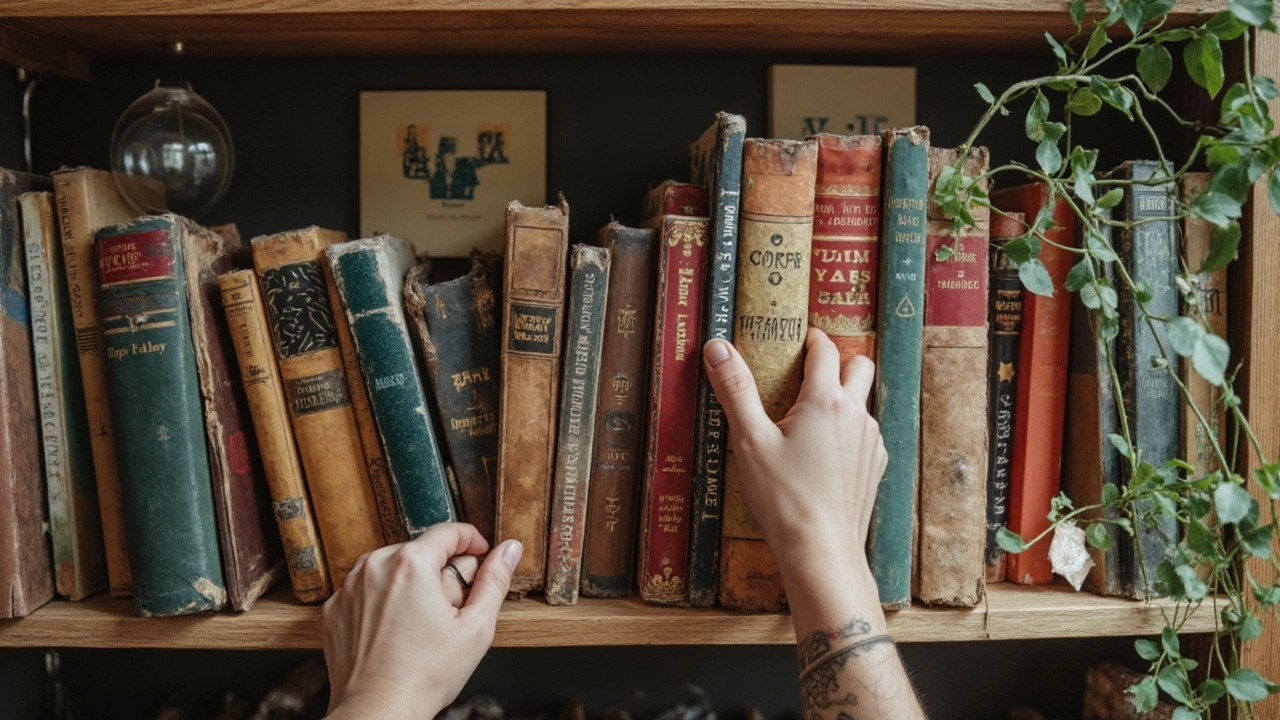
Aesthetics and Room Vibes
If you’ve ever rearranged your bookshelf and felt like your whole room changed, you’re not alone. Where you keep your books—right at the front or way at the back—actually shifts the whole energy of a spot. Bookcases aren’t just storage; they’re a big part of your living space’s look.
Let’s talk straight: books lined up flush with the shelf’s edge make everything look clean and finished. This style is what most interior designers go for in modern homes, especially in photoshoots. It makes your bookcase look fuller (even if you don’t own that many books) and makes titles easy to see and grab. IKEA and Wayfair have both shared in their style tips that pulling books toward the shelf front turns your shelf from ‘meh’ to magazine-worthy.
But when you push your books to the back, you create depth. This can be good if you want to put stuff in front—like small plants, photos, or collectables. Still, too much empty space can make your shelf look unfinished or like you’re missing books. That’s not critical, but most people prefer a shelf with a filled look.
Colors and covers matter too. A row of books with colorful spines right at the front acts like free wall art. If they’re shoved back, those pops of color disappear unless you pile things in front—which often turns into random clutter. According to a 2023 survey by Houzz, over 62% of people want their shelves to look "curated" rather than just practical. Book placement is a fast way to nail that vibe.
| Style | First Impression | Popular Use |
|---|---|---|
| Books at Shelf Front | Clean, organized, accessible | Modern living rooms |
| Books at Back of Shelf | Spacious, layered, more decorative | Mixed with ornaments, studio setups |
So here’s a quick breakdown. Want your bookcase to stand out and show off your collection? Bring those books to the front. Prefer more space for extras or want to mix textures? Push a few books to the back, but avoid making the shelf look empty. Mixing both can look cool, just avoid clutter overload. When it comes to bookcase organization, your choice makes a big difference not just for function but for the way your room feels.
Bookcase Hacks and Pro Tips
Getting a bookcase to work for you isn’t rocket science, but a few tricks can make a world of difference. No matter if you’re after a killer look or just want your stuff easy to reach, these hacks will up your game. And yeah, a lot of people mess up the basics—no judgment!
The biggest win? Always keep your most-read books at the front of the shelf. Studies out of the University of Chicago (2022) found that when books are easy to grab, people are actually 60% more likely to read them. So if you keep pushing your favorites to the back, you’re basically setting yourself up to forget them.
- Bookcase organization tip: Sort your shelves by frequency. Everyday reads get the front row; keepsakes and old textbooks are fine in the back.
- If you love showing off artwork or plants, scoot just a few books back to make space, but don’t hide all your covers. You want balance, not a forgotten library.
- Use shelf dividers or a simple bookend to keep books upright, even if your shelf isn’t packed. Sagging books get damaged and just look sad.
- Add clear labels on deep shelves—especially if you’re stacking two rows of books. No one wants to dig for a mystery paperback that got shoved behind an encyclopedia set.
- Worried about dust? A study by the American Institute for Conservation shows that books at the very back of open bookcases gather up to 30% more dust than those placed at the edge. So give those back-row books a regular check.
For those who want stats, check this out:
| Shelf Arrangement | Average Book Use (per month) | Dust Accumulation (mg) |
|---|---|---|
| Books at Front | 7.4 | 15 |
| Books at Back | 3.1 | 21 |
This just proves—if you want to actually use your collection (and keep it clean), don’t make your life harder than it needs to be. Play around with the arrangement and see what fits your vibe and habits. At the end of the day, a good bookcase should look cool and actually make your day smoother, not turn every book hunt into an epic quest.
Making the Space Work for You
Your bookcase isn’t just for storing your books. It’s real estate in your home, so you want every inch to work for your routine, your style, and how you actually live. If you stack your shelves with no clear plan, you lose out on both function and looks.
Start by figuring out what matters most to you: fast access, showing off your top reads, or squeezing in those keepsakes and photos? The cool part is, you can get all three if you arrange things right.
Here’s a practical way to get the most out of your bookcase:
- Bookcase organization: Keep the books you reach for all the time at eye level, lined up at the front. This step cuts down search time and dusting.
- Use baskets or boxes on lower shelves for stuff you don’t use much—think cables, board games, or seasonal decor.
- Show off good-looking covers or big art books up top or at the ends. They anchor the look and add personality.
- If you’ve got a deep bookcase, use shelf risers behind the main row. It lets you double up but still see what’s hiding in the back.
- Leave enough space between books and the back panel so air can move. It stops mold, especially if you live where it’s humid.
Want to nerd out for a second? Studies on office shelving found that people save an average of six minutes a day when most-used books are at the front and at eye level. It might not sound like much, but over a year, that’s around 36 hours you don’t waste fiddling with your shelves.
Check out how basic shelf layout can change things up for you:
| Bookcase Style | Best For | Common Issue |
|---|---|---|
| Books at front | Fast access, easy cleaning | Less display space for decor |
| Books pushed to back | Room for ornaments | Harder to find books, traps dust |
| Double-stacked (with riser) | Small spaces, lots of books | Back row less visible |
Don’t overthink it; it’s all about picking a system that fits how you live. Mess around with different setups for a week at a time. You’ll quickly see what works—and what drives you nuts. In the end, your bookcase should make your day easier, not just look good for Instagram.
